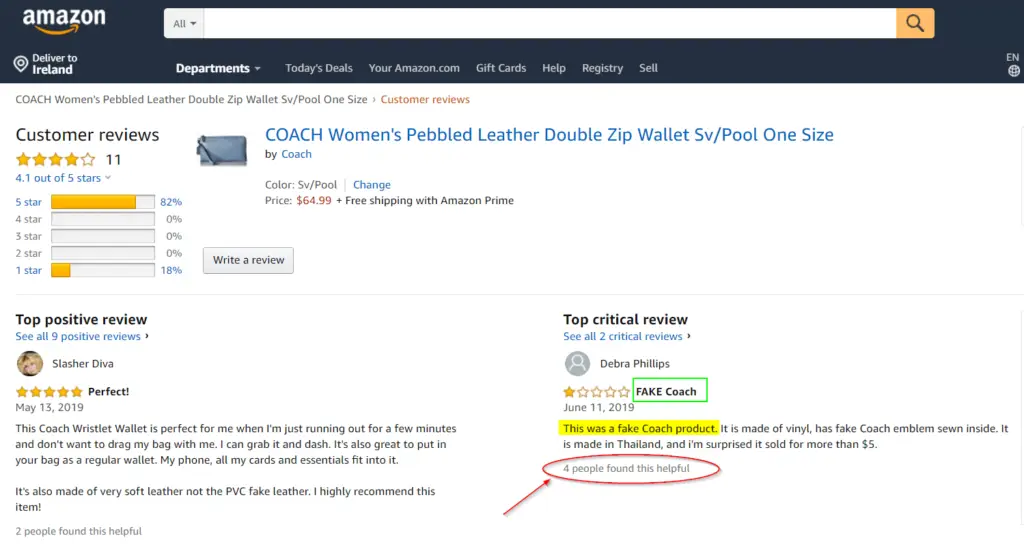On November 24 – Black Friday – online shoppers worldwide will take to eCommerce marketplaces like Amazon, eBay, Walmart and others to hunt for the best deals.
The holiday shopping season is the most crucial trading period of the year and is often depended on to deliver the bulk of annual profits to the bottom line of most e-commerce companies.
According to a report by Adobe Analytics, Black Friday online spending in 2022 set a record of $9.12 billion spent in a day in the US.
Suffice it to say that Black Friday and the Christmas shopping season represent a massive opportunity for those operating in the e-commerce retail space. However, it is also a time for e-commerce retailers and brands alike to exercise extreme caution, including an increased focus on brand protection activities.
In previous GreyScout blogs, we’ve shared insight into the dangers of counterfeit goods on e-commerce marketplaces and the damage they can cause to your brand. The problem of grey market sellers, unauthorized 3P sellers and counterfeiters becomes a critical issue to solve around the holiday shopping sales season. This time of year sees an uplift in traffic and sales on the most popular SKUs. Unfortunately, this time of the year is also an invitation grey market sellers to become more active on eCommerce channels to offload inventory.
Protect against the Counterfeiters
The biggest threat to e-commerce brands and retailers during the holiday shopping season is the rising prevalence of counterfeit goods. As technology advances, it’s becoming ever more accessible for counterfeiters to replicate popular consumer goods, including trending holiday items such as designer clothing, streetwear, electronics, and toys.

Counterfeiters have gotten so good at their craft that they can produce goods nearly indistinguishable from the real thing. This attention to detail and highly sophisticated manufacturing operations have led to huge volumes of counterfeit products flooding online and offline channels. Evidence of this can be witnessed in the corresponding increases in the seizure of fake products by customs and border authorities. For example, Amazon seized and destroyed more than 6 million counterfeit products in 2022.
One of the many ways to enforce against counterfeiters at scale is to conduct frequent test purchases building up towards the shopping season to identify the authenticity of a product and enforce on brand protection portals like Amazon Brand Registry or eBay Vero to take down fake products.
Protect Your Intellectual Property and Trademarks
For e-commerce brands selling patent-protected products and designs, being diligent when it comes to protecting your intellectual property (IP) is critical. Along with protecting your IP, protecting your trademark is equally important.
If you find an unauthorized version of your brand or product for sale online, ensuring your intellectual property (IP) is registered will be critical to removing it.
Monitoring the eCommerce marketplaces building up towards the shopping season to detect IP and trademark infringements by unauthorized 3P sellers, grey marketers, or bad actors will help retain consumer confidence but also protect sales and margins.
Protect Your Customers from Bad Actors
It is now necessary for brands to take an educational approach – through marketing, social media, and the various channels of communication – to inform their consumers of what makes their product unique and how to spot, avoid and report fakes.
As a brand or retailer – you should be taking steps to ensure the pathways that lead customers to find fake versions of your products are severed and unauthorized resellers are shut down and removed as efficiently as possible.
Be diligent. Keep an eye on marketplace search listings, paid ads, and social media channels, paying close attention to any new resellers or recently listed items. When new resellers are discovered, contacting them directly to request information about where they sourced your branded products can be worthwhile.
Some prevalent scams to look out for this holiday season include triangulation fraud, a means by which cybercriminals attempt to utilize stolen credit card information within e-commerce marketplaces.

Parallel imports, damaged or expired products being sold as new, bad actors offloading merchandise procured via Retail Theft, and Organized Retail Crime (ORC) are some of the many types of infringements which become active on eCommerce marketplaces around the holiday shopping season.
Use Brand Protection Software
The holiday shopping season could make or break the profit and loss for many online retailers and brands. Unfortunately, this busiest time of the season also invites opportunistic bad actors that not only negatively impact profit and loss but also threaten consumer safety.
Protecting your brand from bad actors is a very manual task, but brand protection software can make it easier.
Utilizing GreyScout’s Brand Protection Platform’s 3-step helps detect trademark infringers, verify authorized 3P sellers and the product inventory they are listing on eCommerce marketplaces, and enforce malpractices harming the revenues of brand products and infringing brand policies right before holiday sales.
Happy Holidays.

